William Mitchell Ramsay Collection (24 vols.)
Digital Logos Edition
Overview
William Mitchell Ramsay is perhaps one of the most fascinating biblical scholars from the turn of the twentieth century, and his writings are full of knowledge and insight that can only come from one who has extensively experienced firsthand the archaeology and people of Asia Minor. For decades, Ramsay immersed himself in the culture of what is now Greece and Turkey, as he set out first to disprove the Bible as factual and then, to his amazement, to show how the New Testament has proved itself to be historically infallible based on his findings.
A fantastic companion collection to New Testament study, these books give geographic and historical context to the Bible, confirming the history and events contained in the Scriptures. Particularly concentrated on the gospel of Luke and the journeys of Paul.

- Contains over 6,000 pages of biblical and cultural insight into New Testament geography
- Offers studies on the credibility of the Bible, based on archaeological evidence
- Presents an anthology of essays culled from leading academic and religious journals of the day
- Provides historical documentation of William Mitchell Ramsay’s journeys in Asia Minor
- Includes commentaries on the epistles to the Corinthians and the Pastoral Epistles
- Title: William Mitchell Ramsay Collection
- Author: William Mitchell Ramsay
- Volumes: 24
- Pages: 8,371
- Christian Group: Evangelical
- Resource Type: Collected Works
- Topic: Biblical Studies
- The Church in the Roman Empire Before A.D. 170
- The Letters to the Seven Churches of Asia and Their Place in the Plan of the Apocalypse
- Impressions of Turkey During Twelve Years’ Wanderings
- The Cities and Bishoprics of Phrygia
- Was Christ Born at Bethlehem? A Study on the Credibility of St. Luke
- The Bearing of Recent Discovery on the Trustworthiness of the New Testament
- The Teaching of Paul in Terms of the Present Day: The Deems Lectures in New York University
- Luke the Physician and Other Studies in the History of Religion
- The Education of Christ: Hill-Side Reveries
- A Historical Commentary on St. Paul’s Epistle to the Galatians
- The Revolution in Constantinople and Turkey
- The First Christian Century: Notes on Dr. Moffatt’s Introduction to the Literature of the New Testament
- The Historical Geography of Asia Minor
- Studies in the History and Art of the Eastern Provinces of the Roman Empire
- The Cities of St. Paul: Their Influence on His Life and Thought, the Cities of Eastern Asia Minor
- The Thousand and One Churches
- Pictures of the Apostolic Church: Its Life and Thought
- Pauline and Other Studies in Early Christian History
- The Making of a University: What We Have to Learn From Educational Ideals in America
- The Intermixture of Races in Asia Minor
- The Imperial Peace: An Ideal in European History
- Historical Commentary on the Epistles to the Corinthians
- Historical Commentary on the Pastoral Epistles
- St. Paul the Traveller and Roman Citizen
This title is included in the following collections
You can save when you purchase this product as part of a collection.
Logos 6 Collector's Edition Le...
$11,399.99$11,399.99
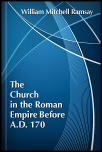
The apostle Paul’s journeys were of great significance to William Mitchell Ramsay. Initially, their importance was due to his own personal mission: to disprove Christianity through archaeological evidence. However, as Ramsay studied Acts, traveling to Asia Minor himself to chart Paul’s journey and dispel the truth of the gospel, he was astonished to find that the historical content in the book of Acts is indeed factual, and it was through these studies and travels that Ramsay himself found Christ. The contents of this volume, originally presented as a lecture series in 1892 at Mansfield College, Oxford, give us a look Paul’s travels and the early history of the church through the eyes of an archaeologist. Maps, pictures, and notes are included.
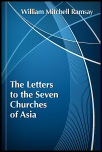
Letters and traveling go together, more often than not. Ramsay pairs the two subjects in this volume, showing the correspondences of the early church, relating them to the history and growth of Christianity, and specifically focusing on the letters to the seven churches of Asia: Ephesus, Smyrna, Pergamum, Thyatira, Sardis, Philadelphia, and Laodicea.
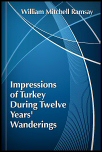
During the latter part of the nineteenth century, Ramsay saturated himself in the Turkish culture for a period of 12 years. Impressions of Turkey During Twelve Years’ Wanderings gives a glimpse into the people and place of Turkey from one who was more than a passerby of the country. “When you have had a wide enough experience,” states Ramsay, “you can strike an average among your facts; but even then you can no longer feel that delightful confidence which sweeps you on from fact to fact and carries the reader with you.” He found that his first impressions of the country, cultivated over months, produced obvious-seeming ideas of who the Turks were and how to “fix” any problems that their culture produced. However, when months turned into years, he came to the realization that life is never that simple. A unique and engaging look at turn of the century Turkey.
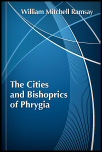
An essay on the history of the city of Phrygia, this volume spans the earliest years of Turkey up until the Turkish Conquest. Ramsay’s wealth of knowledge of Turkish culture, geography, and the local people of the area assists him in illuminating the early years of this ancient, longstanding place.
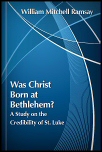
Studying the New Testament book of Luke—particularly Luke 2:1–4, a controversial passage regarding historical validity—Ramsay set out to prove that the material presented in this gospel is without a doubt factual. He examines the importance of the history contained in Luke, explaining its significance in assisting to answer the question of who Christ is. An appendix containing specimens of the documents to which Ramsay referenced ends the resource.
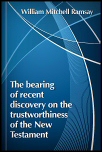
&ldquotI describe no striking discoveries. My aim is to state certain principles that result from modern discovery, and to illustrate their bearing on the New Testament,” says Ramsay. “The method is to show through the examination, word by word and phrase by phrase, of a few passages, which have been much exposed to hostile criticism, that the New Testament is unique in the compactness, the lucidity, the pregnancy and the vivid truthfulness of its expression.” Through his archaeological studies and traveling experiences, as well as his scholastic background, Ramsay is able to offer a compelling argument for the validity of the New Testament.
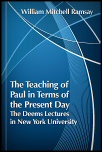
This series of lectures was originally delivered in November, 1910, to students at New York University. Providing a detailed account of Paul’s life, education, and journeys, this volume also analyzes his thought process, literary style, and the doctrine proclaimed in his New Testament epistles. The chronology of his letters is examined, as is the historical accuracy, and the resource ends with several detailed indexes of words and scriptural references found within.
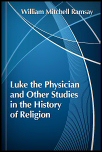
Luke the Physician and Other Studies in the History of Religion is primarily comprised of modified and expanded articles of Ramsay’s that were originally published in magazines. The essays included in this volume discuss Luke, the region of Asia Minor, the Orthodox church in the Byzantine Empire, the chronology of Christ’s life, St Paul, the book of Hebrews, and much more. Thirty-eight detailed graphics are contained to provide visual aid to the topics presented.
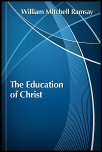
Based on the travels and geographical knowledge Ramsay possessed, The Education of Christ portrays the life of Christ from a unique perspective. This volume, rich with descriptions of the places Jesus visited, shows what the author refers to as Christ’s education: the way he was affected by nature and the world around him.
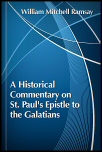
“The attempt is made in this book to show how much light the epistle to the Galatians throws on contemporary history in the widest sense—the history of religion, society, thought, manners, education—in the Eastern provinces of the Empire,” states Ramsay. A thorough discussion of the book and history of Galatians is contained, relating the ancient culture to Ramsay’s day.
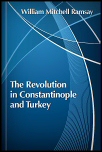
Headed to Constantinople by train, Ramsay resolved to keep a journal of his Turkish adventures and the daily life of the locals. A fascinating analysis of the culture of Turkey at the turn of the twentieth century, this volume peers into the religion of the city, Christians of that time, and records conversations of Ramsay and his wife with Turks. Asia Minor during and after the revolution is also recorded.

In an attempt to dispel inaccuracies in historical records, this volume engages a discussion of biblical criticism. As Ramsay says in regards to Christ, “That the most powerful and lasting movement of the human mind originated in the Church’s misunderstanding of a simple person, and was nursed in the ‘pseudonymous’ composition of legend or half-legend about him, is a theory against which I hope always to contend.” The volume centers around analysis of a lecture given by an important biblical scholar of the time, James Moffat.
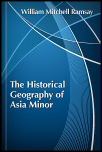
Important for its groundbreaking work in the study of classical topography, The Historical Geography of Asia Minor analyzes the Roman and Byzantine roads, as well as the politics of the area. Maps and charts are included.
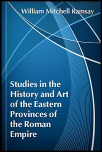
Complete with pictures, this compilation of essays features Margaret Ramsay—William Mitchell Ramsay’s wife—as well as scholars W.M. Calder, A. Petrie, John Fraser, T. Callander, J.G.C. Anderson, and Ramsay himself. Topics discussed include early paganism and Christianity, explorations of Asia Minor, and epitaphs in Phrygian Greek.
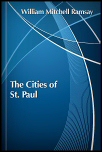
The life and journeys of Paul are of endless fascination. This volume discusses the cities Paul visited, and the influence they had on him. Galatia, Tarsus, Iconium, and more are examined in detail by Ramsay, providing a great backdrop to understanding the apostle Paul.
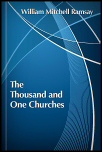
Sparked by a visit to Asia Minor in the year 1882, William Mitchell Ramsay’s interest in rebuilding what he terms the “Thousand and One Churches” grew, until a point in 1907 when he found himself back in Asia Minor with friend Gertrude Bell. This account, divided into four parts, details Ramsay and Bell’s restoration efforts from that time forth, and is complete with extensive photographs, line drawings, maps, and plans of their work. A highly detailed, fascinating historical document.
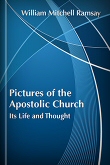
Pictures of the Apostolic Church contains 52 word pictures of the life, teaching, and development of the early church. The growth of the church was determined by the Holy Spirit’s progressive revelation to the earliest Christians. With Pictures of the Apostolic Church, readers have a short study of this progression for each week of the year. The pictures cover a large part of the book of Acts and some scattered sections of various epistles.
A lucid, orderly survey of the life, teaching, and development of the early church, helpful alike to the teacher and the Bible student.
—A.L.A. Booklist
. . . his essays furnish an excellent account of the progressive religious life of the primitive church.
—The Athenaeum
He is always a delightful and picturesque writer . . . Sir William Ramsay’s attitude towards faith is as inspiring as it is striking.
—Book Review Digest
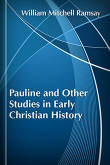
Pauline and Other Studies in Early Christian History anthologizes 15 of William Mitchell Ramsay’s best essays. These essays were culled from such prestigious journals as the Contemporary Review, Quarterly Review, Homiletical Review, and Expositor. The collection also contains 40 illustrations and two in-depth indexes. Essays included:
- “Shall We Hear Evidence or Not?”
- “The Charm of Paul”
- “The Statesmanship of Paul”
- “Pagan Revivalism and the Persecution of the Early Church”
- “The Worship of the Virgin Mary at Ephesus”
- “The Permanence of Religion at Holy Places in Western Asia”
- “The Acts of the Apostles”
- “The Lawful Assembly”
- “The Olive-Tree and the Wild-Olive”
- “Questions: With a Memory of Dr. Hort”
- “St. Paul’s Road from Cicilia to Iconium”
- “The Authorship of the Acts”
- “A Study of St. Paul by Mr. Baring-Gould”
- “The Pauline Chronology”
- “Life in the Days of St. Basil the Great”
The book exhibits all those qualities which we are accustomed to look for in Professor Ramsay’s writings: freshness of standpoint, flashes of insight only possible to a scholar of rich and varied learning, unflagging zest in the handling of his subject—a zest which communicates itself to the reader—and that lucid and forcible style which has done so much to popularize the results of his investigations.
—American Journal of Theology
Not only does Professor Ramsay bring fresh and valuable instruction from the field of his special study, but he renders good service as a judicious moderator of the schools of critics.
—Outlook
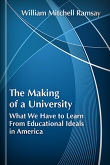
In The Making of a University, William Mitchell Ramsay tells the story of Dr. Isaac Conrad Ketler, cofounder and first president of Grove City College in Grove City, Pennsylvania. Examining Ketler’s building of a successful Presbyterian college, Ramsay argues that Europe’s educational system should be remodeled in the same fashion. As he states in the introduction, “it can be done only by changing the heart of the people and training the teachers of the future.”
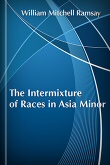
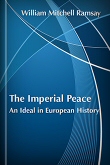
The Imperial Peace: An Ideal in European History is a lecture William Mitchell Ramsay delivered at the University of Oxford’s Sheldonian Theatre in 1913. It was part of the Romanes lecture series for the year—a series in which the speakers are free to speak on any subject save politics or religion. Ramsay chose Dante’s Latin treatise on monarchy and the nature of peace, stating “Peace is not the mere absence of war: it is the power that maintains order and makes moral law effective. It is the administrative force of Justice, and it is the necessary condition of freedom.”
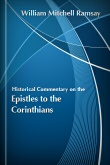
Historical Commentary on the Epistles to the Corinthians was first serialized in three issues of The Expositor from 1900 to 1901. Ramsay begins the commentary by noting the differences between the epistles to the Corinthians and the epistle to Galatians. He then provides a thorough examination of the Corinthian epistles, giving historical context for Paul’s instructions.
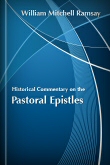
Historical Commentary on the Pastoral Epistles was first serialized in four issues of The Expositor from 1909 to 1911. The bulk of the commentary focuses on 1 Timothy and places Paul’s instructions in the proper historical context.
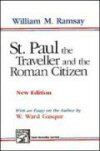
This classic commentary on the book of Acts was written by a scholar who set out to disprove Luke’s authorship and became one of the greatest advocates for the authenticity and accuracy of Luke’s account.
William Mitchell Ramsay was born in Glasgow, Scotland, in 1851. His education took place at Oxford, the University of Aberdeen, and Gottingen, and he later went on to become professor of humanity at University of Aberdeen, as well as the first ever professor of classical archaeology at Oxford. Perhaps most well-known for his archaeological endeavors, he traveled extensively throughout Asia Minor, studying the missionary journeys of Paul and conducting archaeological research, writing numerous books on the findings and adventures of his studies, including St. Paul the Traveller and Roman Citizen His original intent in his studies was to disprove Christianity through archaeology, but through his research he realized that the Bible was accurate and converted to Christianity. Ramsay died in 1939.